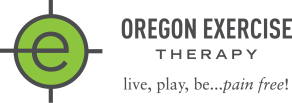Do you try to keep your stomach tight while lifting weights, working out, or while sitting at work?
Why? Where did this idea come from? The photoshopped images of anorexic models we see in fashion magazines or the heavily touched up photos of six pack abs in fitness magazines?
Those fashion and fitness models are often very unhealthy, do not possess functional strength that matters in real life, and their habits of stomach tightening and pulling in can cause many negative health problems.
I think the perfect models for natural, healthy movement and breathing are children. If you have ever been in my clinic, I'm sure you've heard me use children as examples of perfect health. Children instinctively breathe and move efficiently and naturally. They have wonderful upright posture, beautiful S-curved spines, feet that point straight ahead, and soft belly's that move in and out as they breathe deeply. Children enjoy unrestricted graceful movement of every joint and the best strength to weight ratio of all humans. Children are injury free and do not suffer muscle and joint pain except for the occasional bump or bruise.
As an Egoscue certified Postural Alignment Specialist and Advanced Exercise Therapist for over 13 years, I have always stressed the importance of keeping the abdominal muscles relaxed while performing posture exercises (e-cises), while lifting weights, working out, and all day long to allow your diaphragm to work naturally and efficiently. I teach many clients the difference between North-South breathing (bad) and East-West Breathing (good) and how good posture is the key to allowing normal, natural diaphragmatic breathing to happen.
Keeping your stomach relaxed (not pulled in and tight) allows for normal healthy function of the lungs, heart, stomach, intestines, and all internal organs. Pulling your belly button towards your spine or tightening your stomach muscles shuts down normal joint range of motion, muscle synchronization, joint stability, and makes natural, graceful, balanced movement impossible.
Tightening your pelvic floor during exercise is also a bad idea. All muscle tightening should happen naturally and contracting your stomach and pelvic floor muscles together basically squeeze and smash your internal organs. Not good! When teaching East-West Breathing, I talk about how the movement of the diaphragm and lungs during natural breathing acts to aid digestion by massaging the stomach and intestines and helps with spinal disc lubrication by creating small flexion and extension movements helping blood, lymphatic, and spinal fluid movement increase throughout the torso. Since we breathe about 22,000 times a day, tightening your stomach and pelvic floor muscles takes away those vitally important 22,000 movements a day!
This videos by Eric Franklin offer great visuals of what natural breathing is and why holding your stomach or pelvic floor tight is a bad idea.

 RSS Feed
RSS Feed